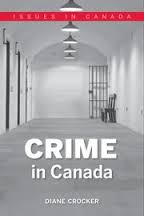Book Review: Crime in Canada
Crime in Canada – It’s Not What you Think!
The book, Crime in Canada, provides an overview of statistics which challenge our perceptions. I have no doubt that the voting public, even victims of crime, would have a different view of tough on crime legislation if they read this book, which favors instead the gradual release from prison and community-based rehabilitation programs. They would learn that ‘tough on crime’ legislation will have the opposite unintended effect, contrary to the interests of the people it was intended to protect—the victims!
Learning that programs which address mental health issues have had some success is positive. I’m not surprised to learn that programs dealing with the issue of drug use are not as successful, given my perception that many believe simple drug possession ought not to be a crime. How can anyone support a program that fundamentally (to a degree) opposes the view of a large populous? I am very thrilled to read about some of the community programs that have resulted in the successful monitoring of sex offenders following the date of release of incarceration that have not only been beneficial for the community but for the offender as well (meaning it’s a program that the offender voluntarily participates in).
The idea that our current political climate favors the U.S. model is frightening given the U.S. has the highest incarceration rates by far. This is inconsistent with our values in Canada which favor more of a restorative justice approach. Though many of our programs have not worked as well as we had hoped, some are working. We need to stay the course for so long as crime rates continue to trend in the right direction (down).
I fear that the expensive tough on crime policies of the current government will take resources from our social programs as well as from rehabilitation programs, resulting in an upward trend of our crime rate.
The author, Diane Crocker, does a very good job of providing an overview of criminal justice issues in Canada. Individuals working in the criminal justice systems as well as students pursuing a career in criminal justice will enjoy this overview. It’s easy to have a narrow view of criminal justice when you work in just one area. More importantly, this book will give the voting public more confidence on Election Day, knowing that their votes are based upon statistical evidence and not merely emotional appeals designed to attract votes.
In the end, I am left with the impression that the current tough on crime approach approach may be favorable, but only provided it does not last! Regrettably, I suspect it will come at great expense to some of our social programs, but I hope in the end it will strengthen our commitment to our core values in Canada.
The debate about whether we need to take a tougher stand against crime is healthy in that it brings to the attention of the public important issues including the demographics of offenders and social problems. Like the State of Texas, I hope that the Government of Canada soon realizes that tough on crime legislation is too expensive and will not have the intended impact of reducing crime in Canada.


